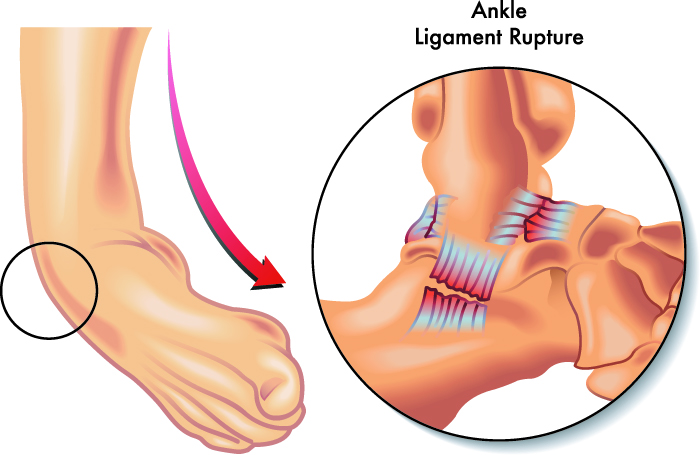Orthopaedic- Tendon and Ligament Repair
Overview
Tendons and ligaments (T/L) are thick connective structures that attach bones to muscle strength. Ligament and tendon damages are common orthopedic disorders. There is a need for therapies that can speed up non-surgical healing or enhance the effectiveness of surgical ligament and tendon repair or restoration.
What is Orthopaedic Surgery?
Orthopedic ligament and tendon repair is a surgical procedure used to heal injured ligaments or tendons in the lower extremity. Tendons are long, narrow bands of tissue that connect muscles to bones. Tendon and ligament repair can improve joint stability and mobility. They're both formed of connective tissue, but their structures aren't the same.

Who qualifies for Orthopaedic Surgery?
Numerous disorders impact the musculoskeletal system of the body and require therapeutic care from a healthcare doctor. These include:
- Arthritis: It is a type of rheumatic disease that causes pain, swelling, and reduced movement. They have an impact on the joints and connective tissues throughout the body.
- Shoulder dislocations: It is caused by injuries and either short-term (acute) or long-term (chronic) swelling of the shoulder joint.
- Carpal tunnel syndrome: It occurs when the median nerve is stretched (squished) as it crosses through the carpal tunnel.
- Fractures: They are breaks in the bone that are either partial or complete.
Why is Orthopaedic Surgery conducted?
Orthopedic surgery is conducted to treat the following conditions:
- Musculoskeletal injuries: It causes pain by affecting the joints, tendons, muscles, neurons, or ligaments.
- Inborn disorders are specific hereditary illnesses caused by abnormalities in certain proteins that aid in the metabolism of nutrients.
- Spine ailments: It is a disease that damages the backbone.
- Degenerative diseases: This condition causes the capability or structure of the damaged tissues or organs to deteriorate over time.
- Tumors: The uncontrolled and gradual proliferation of aberrant tissues is tumors. During surgery, cancerous cells that are concentrated in one place are removed.
What are the different types of Orthopaedic tendons and ligaments repair?
Some common types of Orthopaedic surgeries include:
- Knee Replacement Surgery: According to the severity of the injury, a patient may need a Partial Knee Replacement or a Total Knee Replacement. As a result of a damaged ligament in the knee joint, expansion is restricted and painful.
- Total knee replacement: The knee doctor removes the entire damaged knee joint with metal components.
- Partial knee replacement: Only the damaged section of the knee will be replaced.
- Shoulder Replacement Surgery: The primary objective of shoulder replacement surgery is to alleviate pain, with the additional benefit of restoring movement, fitness, and work, as well as enabling patients to recover to a level of activity as close to normal as possible. Here we replace the "ball" of the joint with a metal ball and cover the glenoid with an extra layer of smooth plastic; an orthopedic surgery must be performed.
- Hip Replacement Surgery: In a total hip replacement treatment, a bone doctor gently removes a painful hip joint with infection and substitutes it with an artificial joint made of metal and plastic. When all other options have failed to provide acceptable relief from discomfort, acupuncture may be used for treatment.
- Knee Arthroscopy: It is a meticulous system capable of analyzing and treating knee joint problems. The arthroscopy surgeon will create a very small incision in the knee during the procedure and implant a small camera known as arthroscopy. The specialist would then be able to investigate the knee problem.
- Spinal Surgeries: Spine surgery may be the sole option available to patients who have suffered from back discomfort for an extended period.
- Ankle arthroscopy: Orthopedic doctors employ this minimally invasive treatment to address ankle joint issues. During an ankle arthroscopy, radiographs of the ankle are magnified and transmitted to a video screen using a thin fiber-optic camera. It further helps in the functioning of the ankle and reduces pain.
What are the benefits of Orthopaedic Surgery?
- An orthopedic procedure may alleviate pain and improve function, allowing patients to resume their regular activities.
- Incisions that are smaller than those of open surgery.
- Infection and other problems are quite low.
- Reduces the loss of blood.
What are the risks associated with Orthopaedic Surgery?
All surgical techniques have a certain amount of risk involved. Some of the risks associated with orthopedic surgery include:
- Surgical site inflammation and edema
- Formation of scar tissue
- Injuries to the spinal cord or nerves.
- Blood clot formation.
Supine is a common posture, with additional attachments for traction of the lower extremities.
Nonsurgical treatments, such as pain medication or rehabilitation, are first considered by orthopedic surgeons. They can also undertake reconstructive surgery to repair damage or treat a disorder.
By making some modest dietary and lifestyle modifications, it's possible to avoid major orthopedic issues.
Our Top Specialities
NOTICE BOARD
CONTACT US
CONTACT US
 Book Appointment
Book Appointment


.svg)
.svg)
.svg)
.svg)








